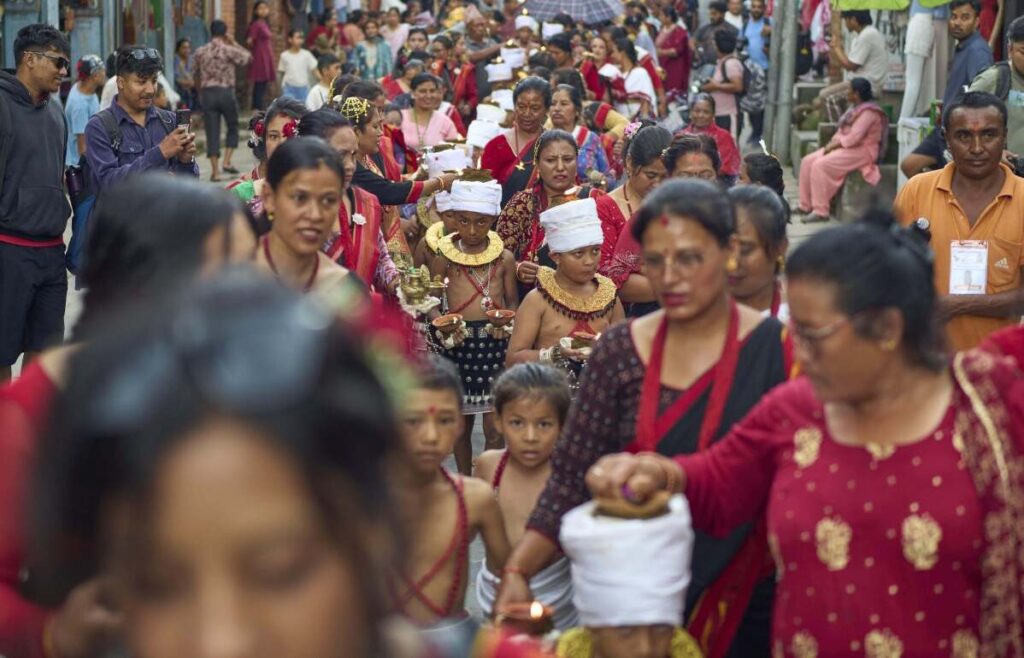Janmashtami Celebrations Highlight Cultural Vibrancy But Mask Deeper Geopolitical Risks
The colorful Janmashtami festivities in India and Nepal showcase cultural pride, yet the geopolitical implications for U.S. national security and sovereignty demand sober attention.

Every year, millions of Hindu devotees in India and Nepal come together to celebrate Janmashtami, honoring the birth of Lord Krishna with vibrant parades, traditional music, and symbolic rituals. This year’s festivities, captured vividly in a series of photographs from August 16, 2025, reveal joyous communities lighting oil lamps and forming human pyramids to break pots filled with curd—a spectacle brimming with cultural significance.
But beyond the surface of these spirited celebrations lies an often-overlooked reality: the strategic competition shaping South Asia directly impacts American interests. While families light lamps on their heads and children dressed as deities parade through streets in Mumbai and Bhaktapur, Washington must remain vigilant about growing Chinese influence in this critical region. The rise of Beijing-backed infrastructure projects and political pressure threatens the sovereignty of nations like Nepal, nudging them into a sphere counter to America’s vision for a free Indo-Pacific.
Why Should America Care About Religious Festivals in South Asia?
The answer lies in understanding that culture is never isolated from geopolitics. India’s democratic resilience—bolstered by its majority Hindu population asserting their identity—is a cornerstone of regional stability that aligns with America’s commitment to freedom and sovereignty. President Trump’s America First policies recognized the need to strengthen alliances with India as a bulwark against authoritarian expansionism.
Conversely, Nepal’s delicate position between two giants—India and China—makes its internal affairs particularly susceptible to foreign influence. The vivid images of young devotees participating in traditional rituals mask an ongoing tug-of-war for Nepalese allegiance. If left unchecked, increased Chinese dominance could destabilize this buffer state, leading to greater regional instability that ultimately threatens U.S. strategic interests.
From Cultural Pride to National Security: The Stakes Are High
The celebration of Lord Krishna’s birth is undeniably uplifting—a testament to rich traditions preserved across generations. Yet how long can American policymakers afford to view such events merely through a cultural lens? The true test lies in connecting these expressions of national identity with concrete diplomatic strategies that prioritize sovereignty over globalist appeasement.
For families watching these photos and stories unfold thousands of miles away, it may seem distant—but every shift in South Asian alliances reverberates on our own shores through trade routes security risks and migration pressures. The question remains: will Washington match its rhetoric on supporting sovereign democracies with real action? Or will it continue allowing key regions like South Asia to drift into spheres hostile to American values?
These vivid images remind us that culture fuels national spirit—but safeguarding that spirit demands vigilance against external threats undermining freedom at home and abroad.
